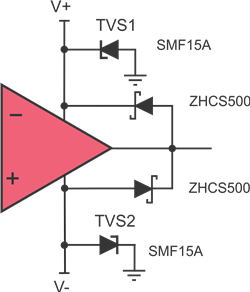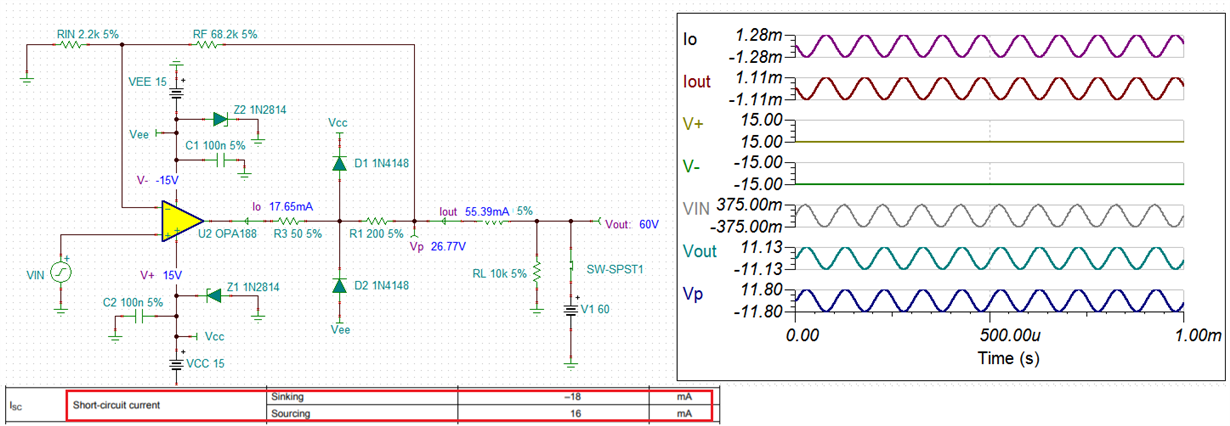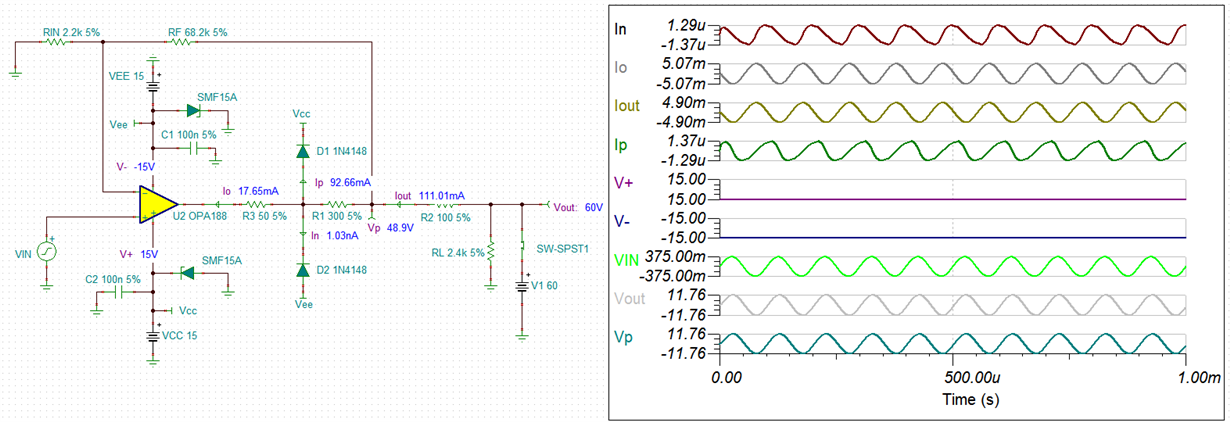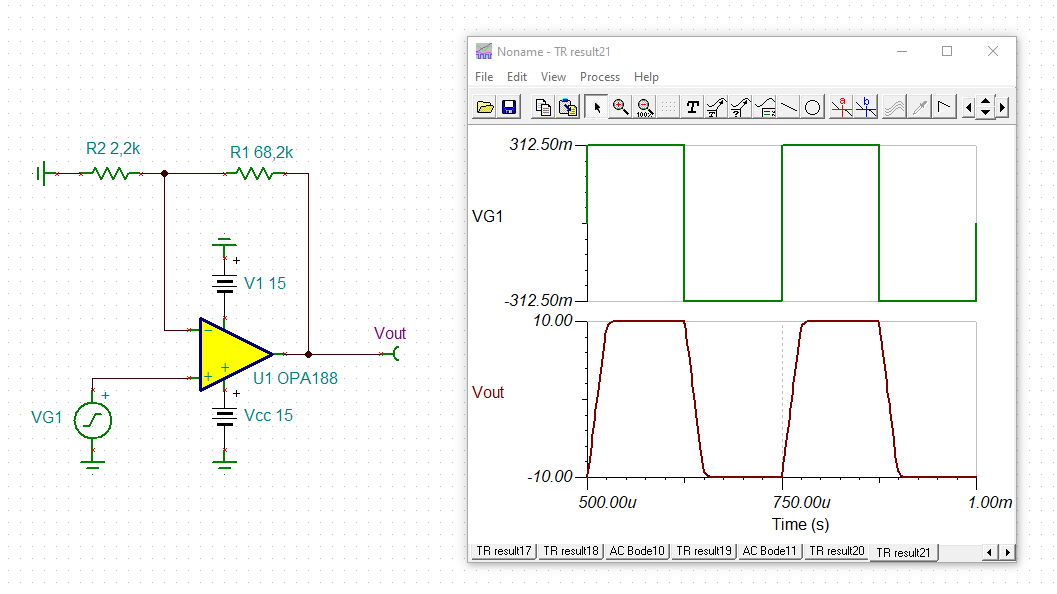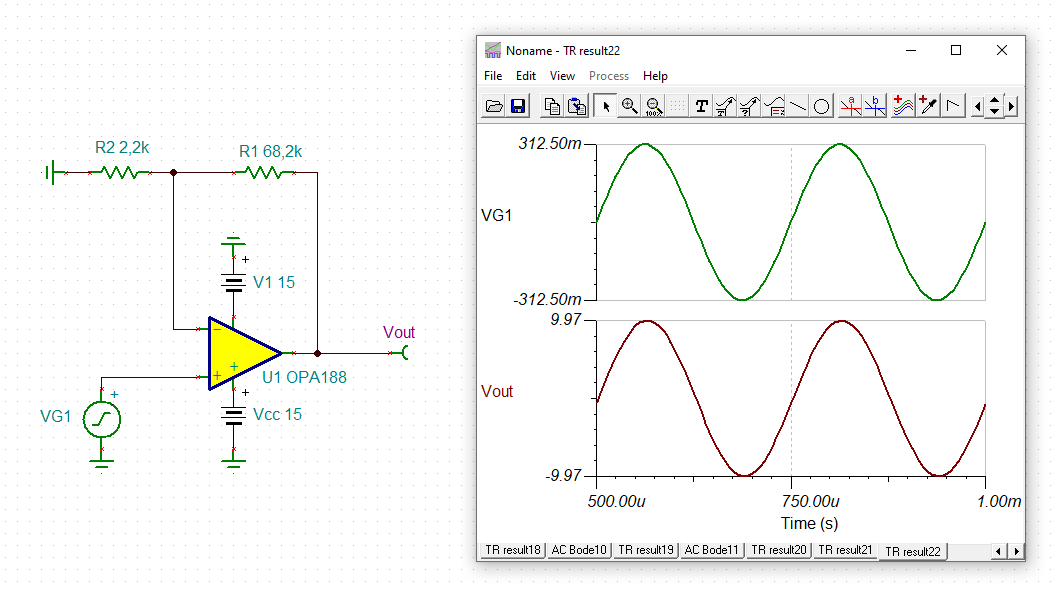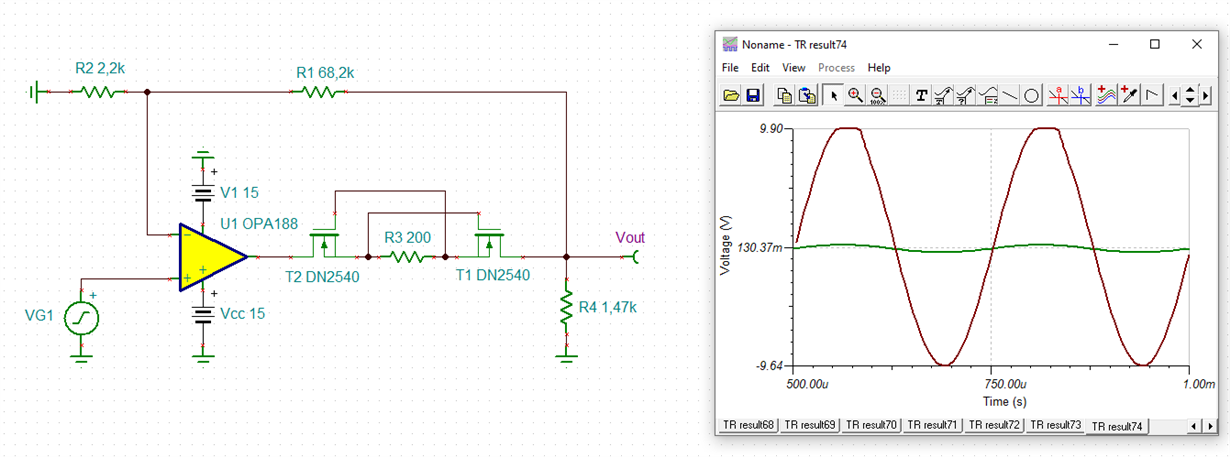Other Parts Discussed in Thread: OPA188, TINA-TI, LME49860
Hello All,
Recently I am designing a precision analog output module.Considering the possibility of wrong wiring under laboratory conditions,our customer requires the module's port the output of the operational amplifier OPA2188 to the ground can withstand a voltage of ±60 V (no damage) for a long time (more than 5 s) . Now I use two depletion NMOS for current limiting protection, but when the external voltage is added to ±30 V, the amplifier output pin is damaged. I've attached my output stage circuit ,Could you please provide some protection advice?
The OPA2188's power supply is ±15V,and the normal output is ±10V.


